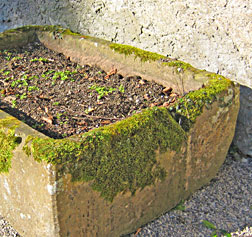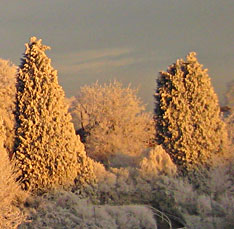Consider Your Environment
Context
If you are a writer, context is all important to the main topic or if you are a photographer, you need to think about the setting for your subject. In just the same way, for best results, the gardener must take into account the environment in which the design is to be executed.
The two main environmental factors to consider are the condition of your soil and the prevailing climate. Whilst it is possible to overcome both these limitations, for example by growing plants in containers and using a greenhouse, it is generally much easier and more satisfying to work with rather than against nature.
Know your Type of Soil
At first sight, common or garden soil appears to be a quite mundane substance, but you only have to consider for a moment the wonderful variety of plants that grow, having gained most of their sustenance from the soil to realize that it is anything but mundane.

Soil supports a vast array of life in addition to providing for all the plants that grow in it. In fact, if it were not for the many living creatures in our soil, it would quickly become sterile and unable to grow the crops that feed us.
In simple terms, gardeners often refer to their soil as heavy or light. Heavy soil refers to a clay-based soil, whereas light refers to a sandy soil.
If you are fortunate enough to have soil that is somewhere between heavy and light and if you have worked in plenty of organic materials over the years, you will have what gardeners refer to as loam, which is considered to be the ideal balanced growing medium.
Heavy (Clay) and Light (Sandy) are not the only options and it is well worth getting to know the type of soil you have in your garden. Armed with this information, you can select the most appropriate plants or plant varieties that will thrive in your garden and produce the most luxurious growth.
Another factor that influences the take up of nutrients by plants is the level of acidity in the soil - typically referred to as the pH level.
Don't Forget about the Weather

As regards climate or weather, you will find much less said about this in books than most other aspects of gardening.
However, it is important to give it due consideration. For example, if you are designing your garden as an extension of your house - a kind of outdoor room - then the prevailing weather conditions are very important.
You may need shade to protect from the hot sun or shelter from wind and rain or additional heat for colder evenings.
The climate also affects the plants you choose. It is worthwhile patrolling your locality to see which plants are thriving in your neighbours' gardens. Don't forget to make observations throughout the year to identify suitable plants for each season.
You also need to take account of weather extremes in your area. Many plants need protection against frost, perhaps by moving them into a greenhouse or, if this is not practicable, using a suitable form of cladding such as straw. Snow and ice can also be a problem, for example the branches of evergreen trees and shrubs may be broken or bent by a heavy snowfall.
These are just a few examples to demonstrate the importance of considering local climatic conditions when designing your own garden or remodelling one that you have inherited from previous owners.
Read more about Soil and Climate |
